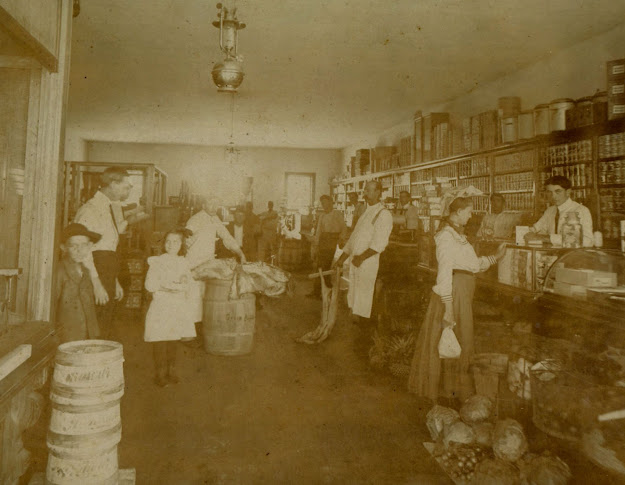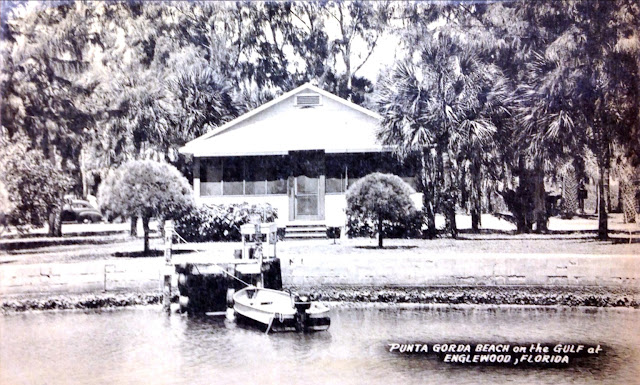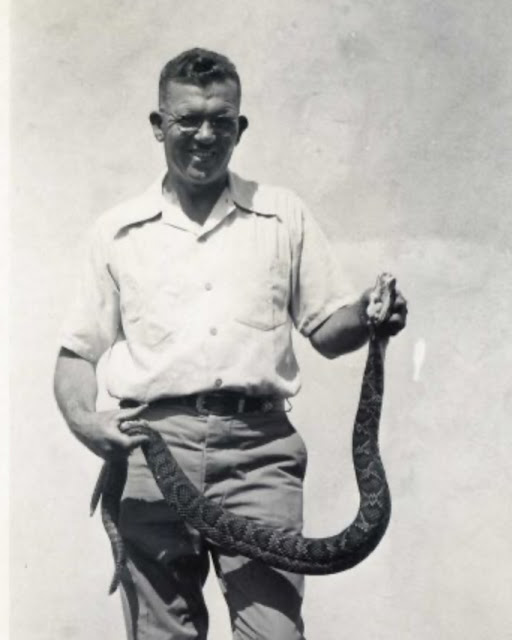Of the many fisheries that operated from Punta Gorda during the late 19th century into the 20th, the one that ultimately became the largest and longest surviving one was the Punta Gorda Fish Company
 |
| Eugene Knight |
Eugene C. Knight, the oldest son of Joel Knight, and L.B. Giddens started their fish business in the late 1890s on the old long dock (near where the Isles Yacht Club stands today). They were among many other early dealers at the time including A.K. Demere, Carnes and Monk, Bill Lewis, M.M. Sullivan and sons, Blocksom and Lewis and the DeSoto Fish Company.
In 1897 Henry Plant pulled his rails to the long dock and it was soon abandoned. The fish industry moved to the new railroad wharf at the end of King Street (now U.S. 41 North). It was at that time, Knight and Giddens went into business with Harry R. Dreggors to form the Punta Gorda Fish Company. Dreggors soon bought Gidden's share in the partnership. In 1899, E.W. Smith joined the partnership.
After Mr. Knight's mysteriously death in Cuba, his family retained his share in the business. Then in 1919 W.E. Guthrie joined the firm with E.W. Smith's interest passing to his daughter Mary Smith Knight.
 |
| King Street Wharf |
Despite numerous catastrophes, including a disastrous storm in 1910 that destroyed boats and camp houses and a 1915 fire that wiped out many of the fish industy's buildings on the King Street Wharf, including the one owned by the Punta Gorda Fish Company, by 1923, the fish industry was thriving with dealers shipping over 7 million pounds of fish on ice from Punta Gorda.
When Barron Collier took over the old Hotel Punta Gorda in 1928 to transform it into the elegant Hotel Charlotte Harbor, the King Street dock was removed to make room for a new bridge over the harbor. The fish industry was again moved to a new city dock at Maude Street. The same year the Punta Gorda Fish Company was incorporated with Dreggors as President.
 |
| 1947 photo of Harry Goulding (long term employee of the Punta Gorda Fish Company), W.H. Monson, and W.E. Guthrie (left to right) |
In 1935, W.H. Munson, Eugene Knight's son-in-law, joined the company becoming its President in 1940. In 1939 another tragedy struck, fire destroyed all the installations on the wharf except one. After this devastation, the West Coast Fish Company, owned by T.C. Crosland, was taken over by the Punta Gorda Fish Company.
During its history, the company operated many run boats from the fish dock, which delivered ice and supplies to the fish houses and returned fish to the dock. The boats included The Ray, the Wallace, the Harris and others. In 1954, the company acquired its first shrimp boat, the Miss Punta Gorda.
The principal partners in the firm, Monson, Guthrie and Dreggors, passed away in the 1960s. The company - the last of the Punta Gorda fishing businesses - ceased operation in 1977 when the City revoked its lease on the municipal dock to make way for the development of Fisherman's Village.
Sources:
Recolletions of Martha Ellen Monson Fish (as told to Gussie Baker)
Harry Dreggors Obiturary, Punta Gorda Herald March 1, 1962
Punta Gorda Herald, August 28, 1947
George Gatewood, "On Florida's Coconut Coast"



































